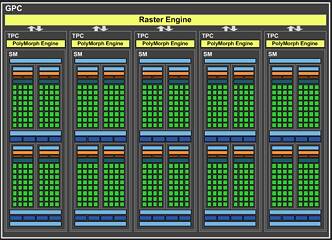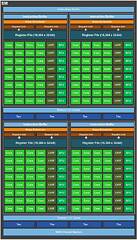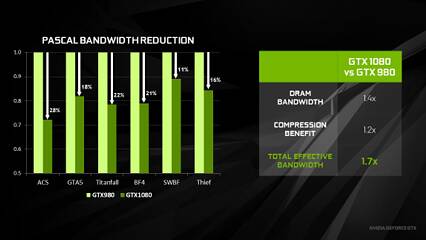Mar 31st, 2025 12:49 EDT
change timezone
Latest GPU Drivers
New Forum Posts
- What's your latest tech purchase? (23432)
- What are you playing? (23327)
- Sexy Hardware Close-Up Pic Clubhouse. (10268)
- The TPU UK Clubhouse (26023)
- Upgrade from a AMD AM3+ to AM4 or AM5 chipset MB running W10? (75)
- Help me pick a UPS (6)
- GPU Crashing System From Hibernation (25)
- What do you do for a living? (461)
- 5,0 +8 Gigabyte Aorus AP1200PM 80+ Platinum Modular. With LCD screen. (4)
- Can you guess Which game it is? (39)
Popular Reviews
- Sapphire Radeon RX 9070 XT Pulse Review
- ASRock Phantom Gaming B850 Riptide Wi-Fi Review - Amazing Price/Performance
- Samsung 9100 Pro 2 TB Review - The Best Gen 5 SSD
- Palit GeForce RTX 5070 GamingPro OC Review
- Sapphire Radeon RX 9070 XT Nitro+ Review - Beating NVIDIA
- Assassin's Creed Shadows Performance Benchmark Review - 30 GPUs Compared
- Enermax REVOLUTION D.F. 12 850 W Review
- AMD Ryzen 7 9800X3D Review - The Best Gaming Processor
- ASRock Radeon RX 9070 XT Taichi OC Review - Excellent Cooling
- AMD Ryzen 9 9950X3D Review - Great for Gaming and Productivity
Controversial News Posts
- MSI Doesn't Plan Radeon RX 9000 Series GPUs, Skips AMD RDNA 4 Generation Entirely (142)
- Microsoft Introduces Copilot for Gaming (124)
- AMD Radeon RX 9070 XT Reportedly Outperforms RTX 5080 Through Undervolting (119)
- NVIDIA Reportedly Prepares GeForce RTX 5060 and RTX 5060 Ti Unveil Tomorrow (115)
- Over 200,000 Sold Radeon RX 9070 and RX 9070 XT GPUs? AMD Says No Number was Given (100)
- NVIDIA GeForce RTX 5050, RTX 5060, and RTX 5060 Ti Specifications Leak (96)
- Retailers Anticipate Increased Radeon RX 9070 Series Prices, After Initial Shipments of "MSRP" Models (90)
- China Develops Domestic EUV Tool, ASML Monopoly in Trouble (88)
 341
341
NVIDIA GeForce GTX 1080 8 GB Review
GeForce Pascal Features »Architecture
The GeForce GTX 1080 is based on NVIDIA's second biggest GPU based on the "Pascal" architecture, the GP104. The biggest GPU is the GP100 driving the Tesla P100 HPC processor. The GP104 succeeds the GM204 (GTX 980, GTX 970), and despite having a smaller die at 314 mm² when compared to the 398 mm² of the GM204, it does feature significantly higher transistor counts at 7.2 billion when compared to the 5.2 billion of the GM204. This is due to NVIDIA's big move to the 16 nm FinFET process.With each successive architecture since "Fermi," NVIDIA has been enriching the streaming multiprocessor (SM) by adding more dedicated resources and reducing shared resources within the graphics processing cluster (GPC), which leads to big performance gains. The story continues with "Pascal." Like the GM204 before it, the GP104 features four GPCs, super-specialized subunits of the GPU that share the PCI-Express 3.0 x16 host interface and the 256-bit GDDR5X memory interface through eight controllers. These controllers support both GDDR5X and GDDR5 memory, and the upcoming GeForce GTX 1070 is expected to feature 7 Gbps GDDR5 memory instead of the 10 Gbps GDDR5X on the GTX 1080.
Workload across the four GPCs is shared by the GigaThread Engine cushioned by 2 MB of cache. Each GPC holds five streaming multiprocessors (SMs), which is an increase from the four SMs each GPC held on the GM204. The GPC shares a raster engine between these five SMs. The "Pascal" streaming multiprocessor features a 4th generation PolyMorph Engine, a component for key render setup operations. With "Pascal," the PolyMorph Engine includes specialized hardware for the new Simultaneous MultiProjection feature. Each SM also holds a block of eight TMUs.
Each SM continues to feature 128 CUDA cores. The GP104 hence features a total of 2,560 CUDA cores. Other vital specifications include 160 TMUs and 64 ROPs. NVIDIA claims to have worked on a new GPU internal circuit design and board channel paths to facilitate significantly higher clock speeds than what the GM204 is capable of. The GeForce GTX 1080 ships with a staggering 1607 MHz GPU clock speed for a maximum GPU Boost frequency of 1733 MHz. At its launch event earlier this month, NVIDIA demonstrated a 2.1 GHz GPU overclock on the reference-design board with stock air-cooling, so we know this GPU likes to overclock.
The GeForce GTX 1080 is the first graphics card to use the new GDDR5X memory standard. The interface enables effective data-rates that are as high as 14 GHz, and although it has many bare-metal specifications in common with GDDR5, minimizing R&D for its implementation, the memory chip design is improved with higher pin counts to support these higher data-rates. The memory is clocked at an effective 10 GHz. Over a 256-bit memory interface, this works out to a memory bandwidth of 320 GB/s NVIDIA has also optimized the usage of with more advanced 4th generation lossless Delta Color Compression. The best-case scenario has Delta Color Compression provide an "effective" memory bandwidth uplift of 20 percent, which results in 384 GB/s.
The "Pascal" architecture supports Asynchronous Compute as standardized by Microsoft. It adds to that with its own variation of the concept with "Dynamic Load Balancing."
Mar 31st, 2025 12:49 EDT
change timezone
Latest GPU Drivers
New Forum Posts
- What's your latest tech purchase? (23432)
- What are you playing? (23327)
- Sexy Hardware Close-Up Pic Clubhouse. (10268)
- The TPU UK Clubhouse (26023)
- Upgrade from a AMD AM3+ to AM4 or AM5 chipset MB running W10? (75)
- Help me pick a UPS (6)
- GPU Crashing System From Hibernation (25)
- What do you do for a living? (461)
- 5,0 +8 Gigabyte Aorus AP1200PM 80+ Platinum Modular. With LCD screen. (4)
- Can you guess Which game it is? (39)
Popular Reviews
- Sapphire Radeon RX 9070 XT Pulse Review
- ASRock Phantom Gaming B850 Riptide Wi-Fi Review - Amazing Price/Performance
- Samsung 9100 Pro 2 TB Review - The Best Gen 5 SSD
- Palit GeForce RTX 5070 GamingPro OC Review
- Sapphire Radeon RX 9070 XT Nitro+ Review - Beating NVIDIA
- Assassin's Creed Shadows Performance Benchmark Review - 30 GPUs Compared
- Enermax REVOLUTION D.F. 12 850 W Review
- AMD Ryzen 7 9800X3D Review - The Best Gaming Processor
- ASRock Radeon RX 9070 XT Taichi OC Review - Excellent Cooling
- AMD Ryzen 9 9950X3D Review - Great for Gaming and Productivity
Controversial News Posts
- MSI Doesn't Plan Radeon RX 9000 Series GPUs, Skips AMD RDNA 4 Generation Entirely (142)
- Microsoft Introduces Copilot for Gaming (124)
- AMD Radeon RX 9070 XT Reportedly Outperforms RTX 5080 Through Undervolting (119)
- NVIDIA Reportedly Prepares GeForce RTX 5060 and RTX 5060 Ti Unveil Tomorrow (115)
- Over 200,000 Sold Radeon RX 9070 and RX 9070 XT GPUs? AMD Says No Number was Given (100)
- NVIDIA GeForce RTX 5050, RTX 5060, and RTX 5060 Ti Specifications Leak (96)
- Retailers Anticipate Increased Radeon RX 9070 Series Prices, After Initial Shipments of "MSRP" Models (90)
- China Develops Domestic EUV Tool, ASML Monopoly in Trouble (88)






